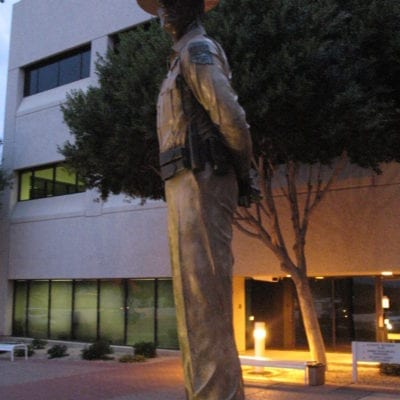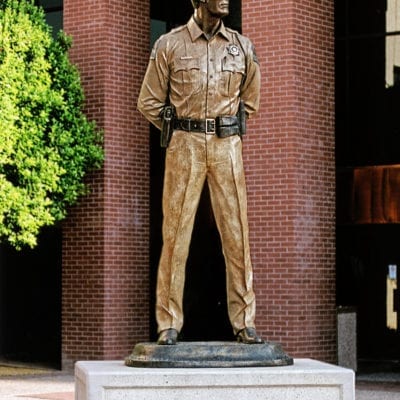Author: International Public Safety Association
By Dave Mulholland, Administrator, Arlington County Emergency Communications Center and member of the IPSA’s 911 Telecommunications Committee
Each day, 9-1-1 telecommunicators handle stressful calls involving law enforcement, fire and medical incidents. Telecommunicators are trained to calm highly distressed callers and gather the appropriate information within structured protocols and processes. Their training and the protocols they use have been developed and refined over decades. Coupled with strong training and defensible protocols, telecommunicators have become experts in handling high-stress calls through repetitious use of both foundational elements.
However, the 9-1-1 landscape has changed as acts of mass violence and other multi-caller/multi-victim high-threat incidents begin to increase. These acts have restructured in-the-field first response efforts. Police officers now arrive and directly enter the area to engage the threat, no longer securing exterior perimeters and staging until sufficient resources exist for team entry into the incident. Trained fire personnel and medical personnel now enter hot zones rather than waiting for a scene to become secure before they enter to render aid.
Similarly, acts of mass violence impact traditional 9-1-1 response. Telecommunicators, as the first of the first responders, play a critical role in determining the nature and extent of the threat and supplying the in-field responders with information to end the threat. During an act of mass violence, it is likely that the 9-1-1 center will be quickly overcome with calls. Triaging these calls to gather the most pertinent information is paramount. To successfully do this, the telecommunicator may need to deviate from traditional practices such as gathering detailed information about injuries and providing emergency medical dispatch protocols.
Below are five tips to assist the 9-1-1 center in handling mass violence events.
Tip 1: Gather information
During an on-going act of mass violence, the highest priority is to gather information to stop the threat. Law enforcement first responders must be provided with as much information regarding the type of threat and information to help identify the attackers and their location. High-threat trained fire and rescue personnel need to understand the environment to make informed decisions on when and where to begin their response inside the incident. The dispatcher is informing these decisions. Telecommunicators also help inform the response by identifying any additional information sources at the scene such as video feeds and determining if there are possible secondary threats at the scene.
Tip 2: Prioritize calls
It is essential that 9-1-1 lines be kept clear so that additional information may be obtained. This often requires truncating calls from victims and witnesses on the scene. It is hard to disengage with someone who is injured or next to someone who is seriously injured or dead. Calls must focus on stopping the threat, and until that happens, telecommunicators should not be triaging medical priorities or providing medical direction through emergency medical dispatch protocols. Jurisdictions could consider creating specially trained crisis personnel from other governmental departments (such as human services) who can be activated to communicate with callers during an active incident and provide direction and comfort to the callers. After the 9-1-1 telecommunicator obtains the necessary information from the initial call, the call be transferred to another phone bank staffed with these specialists.
Tip 3: Mobilize CISM teams
As soon as it is clear that you have a mass casualty or significant active shooter event, mobilize Critical Incident Stress Management (CISM) or Traumatic Exposure Recovery Program (TERP) team members. When developing these teams, ensure that there are members not actively deployed as an event responder who can respond to on-going event to help begin help with stress management in the 9-1-1 center. Thus, the healing process can begin even as the incident is still ongoing. All 9-1-1 supervisors and managers must constantly communicate with and evaluate telecommunicators during the incident to gauge when they may be reaching breaking points. Be prepared to appropriately relieve an employee who may have reached maximum stress levels during the incident. A broken employee will not effectively contribute to incident resolution.
Tip 4: Train, train, train
As stress levels rise, thinking functionality begins to rely more on how the brain has been trained and conditioned to respond. The adage of you fight as you train is equally true in the 9-1-1 center. Telecommunicators must be trained on response to acts of mass violence, especially through repetitive simulation exercises. This will assist the telecommunicator in developing greater comfort to follow different protocols during a mass violence event. Time spent in continuous roll call and simulation trainings multiple times a year will reap large rewards should a mass violence incident occur.
Tip 5: Public education
Great efforts have been made to educate the public on responding to acts of mass violence, such as the “Run, Hide, Fight” educational campaigns. However, little has been done to educate the public on what information is important to relay when calling 9-1-1 during an act of mass violence or what to expect when calling. For example, the public should be prepared for the telecommunicator to quickly gather information regarding the active threat but not remain on the line to determine extent of injury or provide reassurance and medical direction. 9-1-1 centers should work collaboratively with their respective first responder agencies to expand education efforts to include communications with 9-1-1 during a mass violence incident.
Conclusion
The role of the telecommunicator is critical in responding to and resolving acts of mass violence. It is imperative to continually evaluate appropriate response to 9-1-1 calls during acts of mass violence through decomposition of prior events, adoption of best practices and lessons learned and development of new tactics and protocols in the 9-1-1 center. Telecommunicators prove their value in saving lives, providing hope to those in distress, and protecting first responders every day. Efficient handling of acts of mass violence amplify the telecommunicators critical role as part of the first responder team.
About the Author
Dave Mulholland is currently the Administrator for the Arlington County, Virginia, Emergency Communications (9-1-1) Center. He retired as a Major from the United States Park Police after 27 years of service. He has also served as the Statewide Interoperability Coordinator for the District of Columbia. Mulholland will be presenting at the IPSA’s Mass Casualty Incidents Symposium this Fall in Washington D.C.






